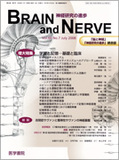Japanese
English
- 有料閲覧
- Abstract 文献概要
- 1ページ目 Look Inside
- 参考文献 Reference
Ⅰ.意欲と前頭連合野
前頭連合野は知的機能においても情動・動機付け機能に関しても,高次な精神活動の中枢として重要な役割を果たしている1)。情動・動機付け機能の中でも「意欲」は前頭連合野の最も重要な働きの1つである。前頭連合野に損傷を受けた患者,特に20世紀の半ばに世界中で行われた「前頭葉ロボトミー手術」を受けた患者には,この「意欲の減退」がみられることが多い1)。GreenblattとSolomon2)は,「両側性前頭葉ロボトミー」患者によくみられる4つの症状のうちで,「欲動の減弱」を第1に挙げている(他の3つは,自己への関心の減弱,外部へ向けられた行動や社会的感覚の低下,浅い感情生活)。
前頭連合野はFig.1に示すように外側部,内側部,眼窩部の3つに大別されるが,この中のどの部位がこうした意欲の減退をもたらすのかについては,さまざまな分野で研究が行われているが,明言できる段階にはまだない。Duffyら3)は,主に前頭連合野内側部の左右両側への銃弾を受けた1人の患者の例を紹介している。その患者は,1人でいるときは不活発で,自分の性格が変化したという自覚もあり,「昔はいろいろなことに楽しみを覚えたが,今はそうしたいという気持ちが起きない。ただ,自分が退屈だとは思わない」というように述べている。また,前部帯状皮質(Fig.1)を左右,両側性に切除手術を受けた患者は,苦痛や飢え・渇きに無関心で,自発的な動きや発話に乏しく,質問にも最小限の応答しかしない傾向がみられたとも報告される4)。
Abstract
The prefrontal cortex (PFC), which is considered to be the center of executive control, also plays important roles in motivational operations. Neurons related to the expectancy of the presence or absence of a particular reward in a task situation are present in the primate lateral, medial and orbital PFC; these neurons show differential delay activity between reward and no-reward trials as well as showing differential delay activity between different types of reward trials. Reward expectancy-related neuronal activities reflect the motivation of animals to obtain the reward. Behavioral studies indicate that better learning is achieved when a more preferred reward is used.
In primate lateral PFC neurons, cognitive task (e.g., working memory)-related activity is enhanced when a more preferred reward is used. Thus, motivation appears to modulate learning-related neuronal activity that in turn modulates learning-related behavior. Expectancies of outcome can also be advantageous during learning if animals exhibit different reactions for different outcomes, as different expectancies develop for different outcomes. Thus, differential outcome expectancies may facilitate learning and discriminative performance by providing the subject with an additional source of information. Motivation is induced not only by homeostatic (such as food and liquid) but also by nonhomeostatic rewards (such as seeing and manipulating interesting objects). The expectancy of both types of rewards could modulate learning at both the neuronal and behavioral levels.

Copyright © 2008, Igaku-Shoin Ltd. All rights reserved.


